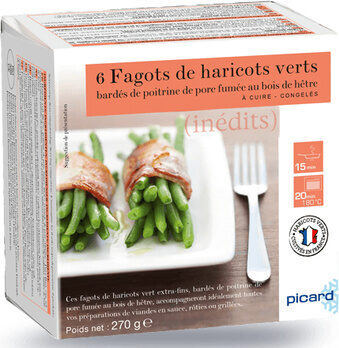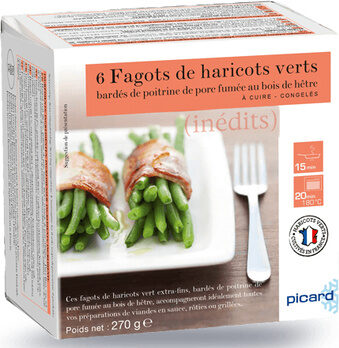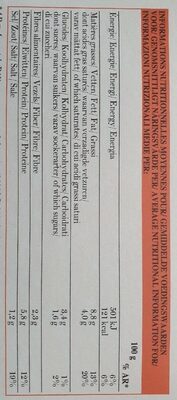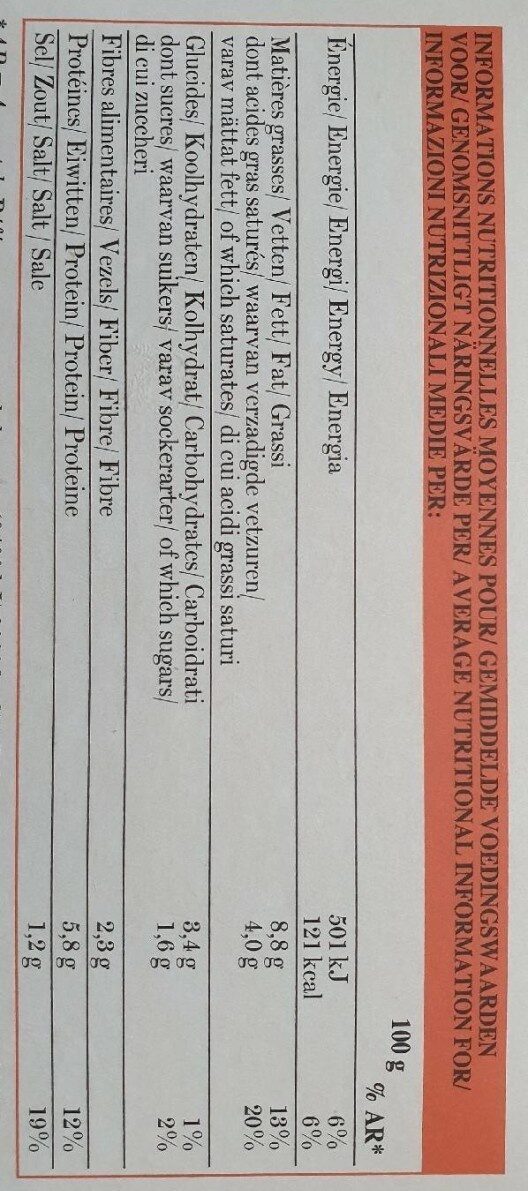6 Fagots de haricots verts - Picard - 270 g e
This product page is not complete. You can help to complete it by editing it and adding more data from the photos we have, or by taking more photos using the app for Android or iPhone/iPad. Thank you!
×
Barcode: 3270160590193 (EAN / EAN-13)
Common name: 6 Fagots de Haricots Verts Bardés de Poitrine de Porc fumée au Bois de Hêtre
Quantity: 270 g e
Packaging: Plastic, Cardboard, Frozen
Brands: Picard
Categories: Frozen foods, Meals, Frozen ready-made meals
Origin of ingredients: France, fr:Hors France
Manufacturing or processing places: Pays-Bas
Link to the product page on the official site of the producer: https://www.picard.fr/produits/6-fagots-...
Stores: Picard
Matching with your preferences
Environment
Packaging
Transportation
Report a problem
Data sources
Product added on by date-limite-app
Last edit of product page on by packbot.
Product page also edited by beniben, kiliweb, openfoodfacts-contributors, segundo, yuka.FrNpH8WTAZB5QvXMy6MG3RSnDf3rOORhPVQqog, yuka.V2FaUUxaa3RncUFia2NkanJ6YUsxTXR0MmE3elRWaXlBUFZKSVE9PQ, yuka.sY2b0xO6T85zoF3NwEKvlhVOYvHA_G-VOyTgh1DS6-e3D5LOaPh7yaH4bqo, yuka.sY2b0xO6T85zoF3NwEKvlkNtcIf6oCLuJgPil2qu9IigL6G1WNUsxY33Cas.










